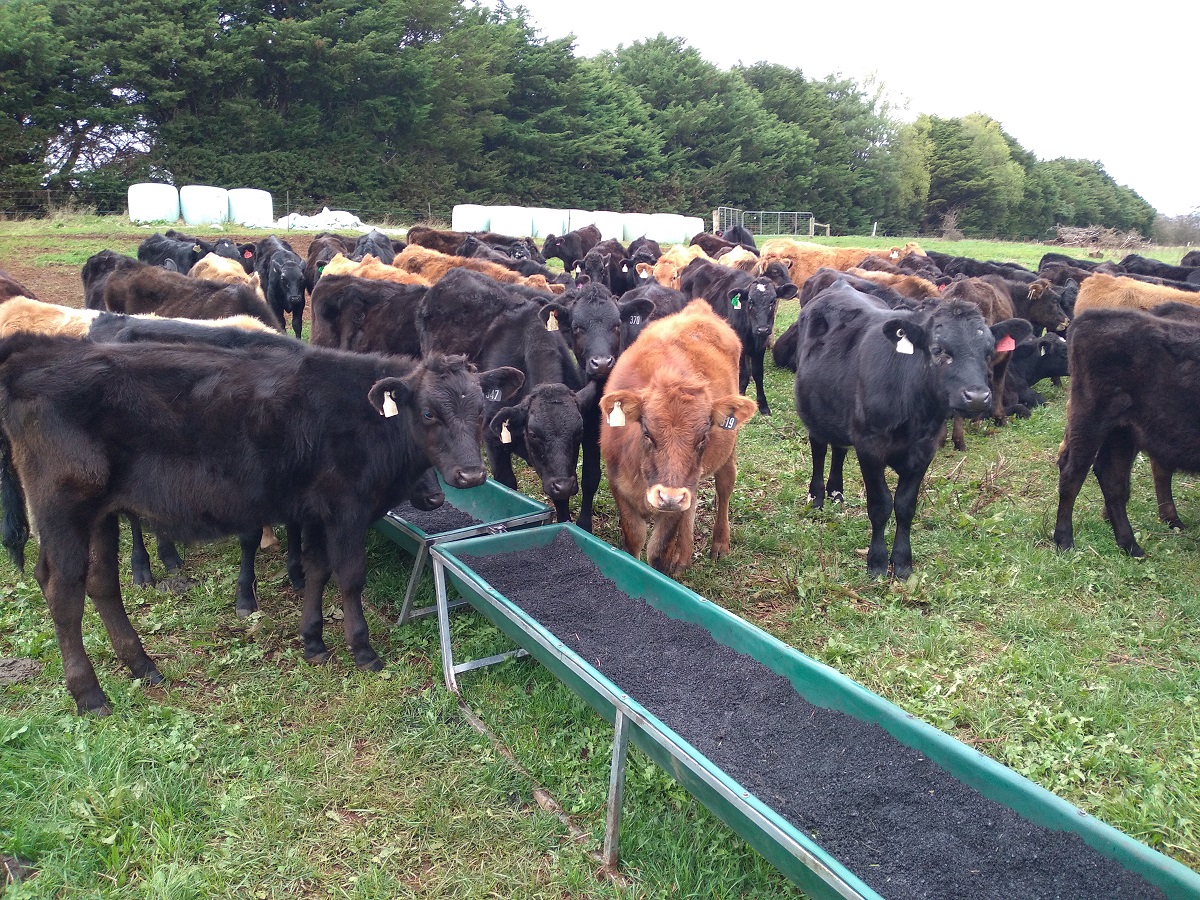Project details
Status: Current
At a glance
- Asparagopsis offers a significant opportunity to mitigate enteric methane.
- Novel delivery mechanisms for feeding Asparagopsis including biochar (i.e., activated charcoal) will be assessed.
- Aim is to fast-track the adoption of low-emissions feed additives at the farm scale in Tasmania.
This project has the potential to realise the dual benefit of reduced methane emissions from livestock and increased returns for farmers using seaweed native to Tasmanian waters.
The focus of this work is to fast-track the adoption of low-emissions feed additives at the farm scale in Tasmania with significant national and international implications.
The need to reduce GHG emissions
Agriculture is facing increasing consumer and community pressure to reduce GHG emissions. Enteric methane accounts for 66 per cent of agricultural emissions and represents not only a significant GHG challenge but a significant opportunity as the energy lost by livestock as methane accounts for six to 10 per cent of gross energy intake.
Industry Partnerships
Dr Richard Rawnsley will lead a team that includes industry partners Fonterra and Sea Forest, a Triabunna-based business that is farming Asparagopsis at a commercial scale
In this project, novel delivery mechanisms for feeding Asparagopsis including biochar (i.e., activated charcoal) will be assessed.

Why Asparagopsis?
Asparagopsis offers a significant opportunity to mitigate enteric methane, but delivery options for grass-fed livestock at scale are currently lacking. In Tasmania, biochar may offer an efficient way to feed Asparagopsis to livestock, although it may also offer additional synergistic benefits that need to be investigated.
Through multiple on-farm experiments, this project will assess emissions, profitability and practical issues associated with adoption of low-emission feed additives.

Trial Sites
Along with TIA’s Dairy Research Facility at Elliott, three Tasmanian farms will be used as trial sites.
The consortium will enable commercial-scale robust feeding trials to assess effective adoption of the low-emission feed technology, alongside evaluation of the whole of system-level changes including profitability, social acceptability, and practical barriers to adoption.
Key Equipment
The research team will use Green Feed Units - self-contained units that allow for methane measurements from livestock in the field.
With a potential dual benefit of positive environmental impact, and cost savings for farmers, the project will also engage and support the Tasmanian biochar industry sector, as well as Sea Forest and its efforts to create a new and sustainable industry based in the state.
Related stories
For more information contact: